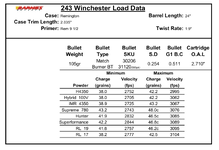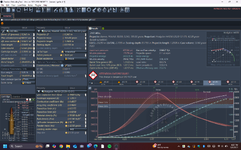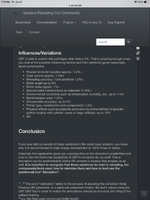Nimbus73
FNG
I'm asking for a little help to understand. I have loaded but not shot yet a short ladder using the 105gr Match Burner and H4350 in my 243Win. I want to see if it will stabilize. I made 10 rounds, 2ea at .3gr intervals. My intentions were to shoot 5 at 100yds and 5 and 200yds to see if I have any tumble or key holing. I recently downloaded GRT, trying to learn it and I've been comparing some of my other shooting results to its predictions and for the most part I'm impressed. This is my concern. I used Barnes load data for my source and started in the upper third of their load range at 41.3gr H4350 thinking I would be well under max pressure and ending with 42.5gr being .3 grains over their max, but when I entered the data into GRT for my loads it tells me I'm way over pressure. GRT predicts 40.7gr to be about 59.7kpsi and 42.2gr at 67kpsi and 42.5 up to 68.6kpsi. How much faith should be given to the pressure predictions GRT puts out? Is the Barnes data too spicy? I've loaded 100gr Sierra SBT's up to 42.5gr seeking more velocity from my 20" barrel before I realized I'm pushing way too hard and have backed off to 40.3 gr. If GRT is even remotely close for this recipe, I need to pull these rounds and find a safer ladder. What have your charges been for this or similar 105gr projectiles in 243Win. and what are your experiences?



